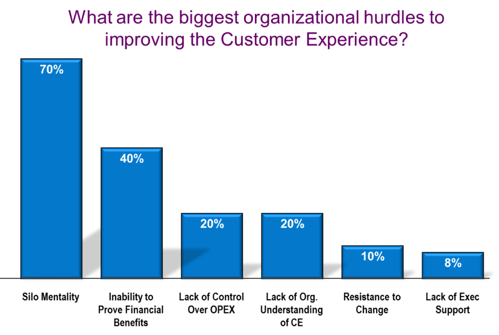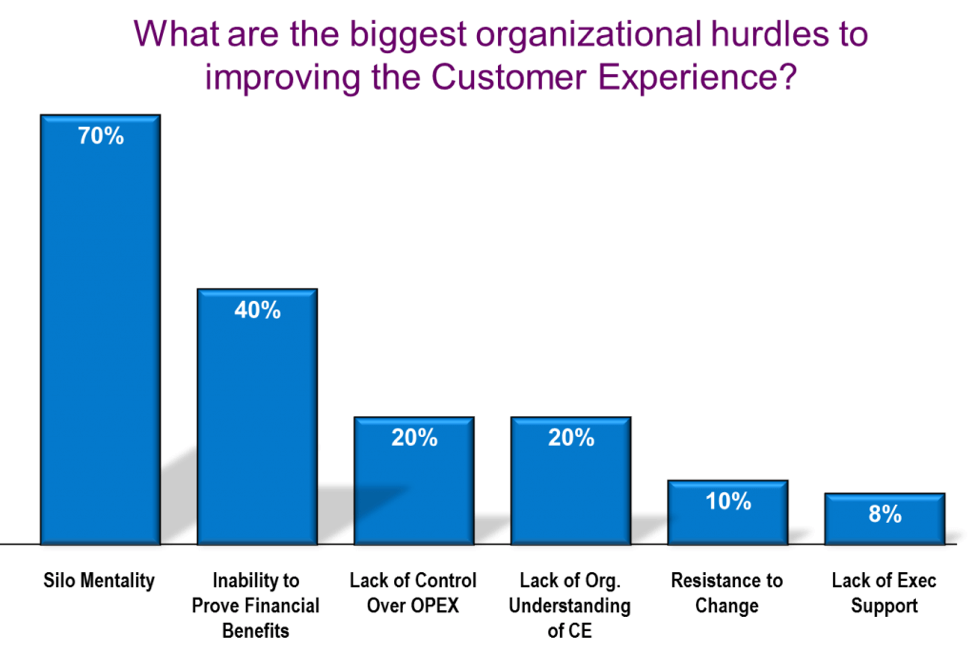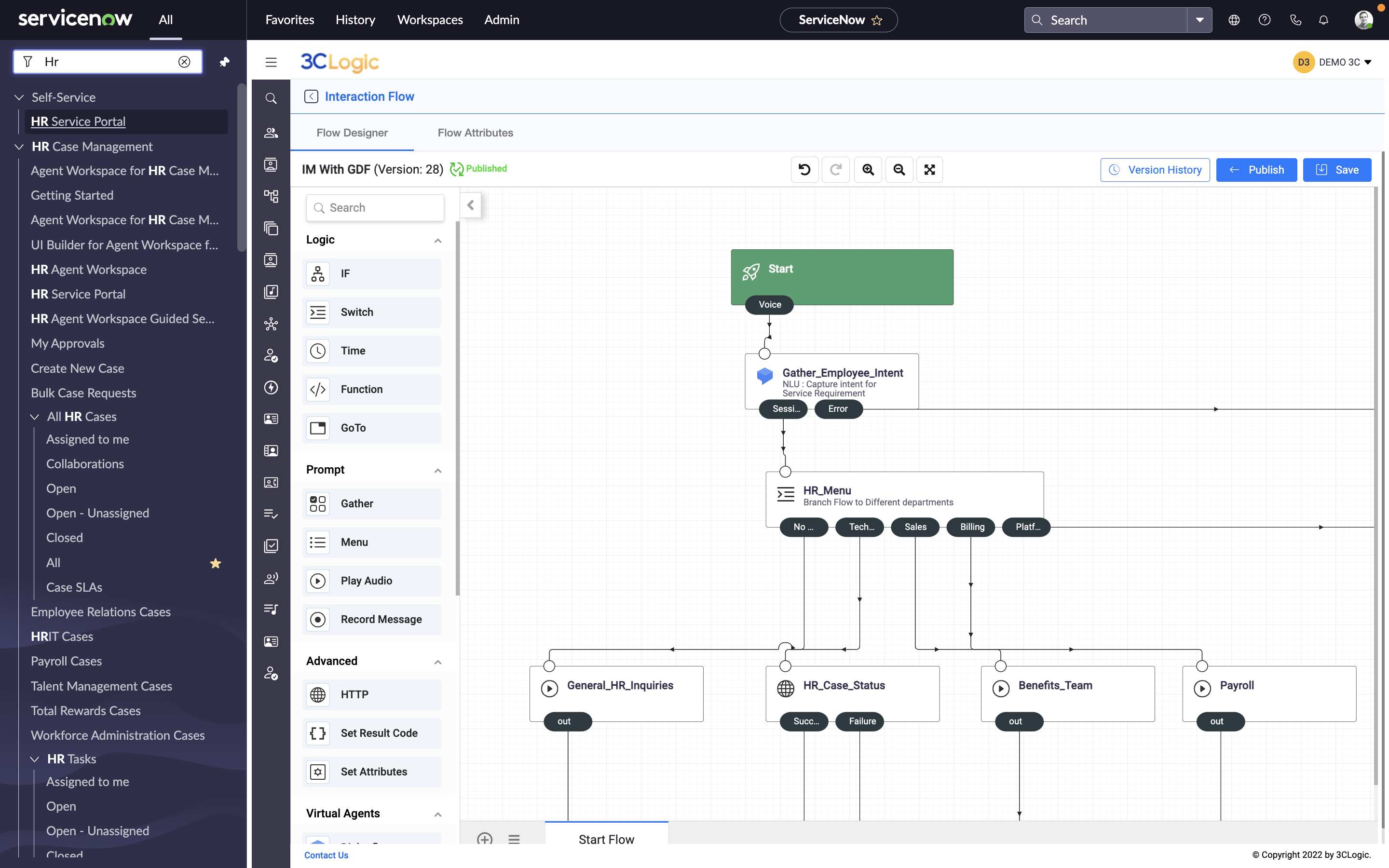Customer experience is quickly becoming businesses’ next competitive battleground, expected to overtake price and product as a brand’s key differentiator by 2020. And while many organizations are making CX strides within their individual departments, adopting advanced solutions (CRM, Marketing Automation, Contact Center Solution, Billing Software, etc.) and business processes to help streamline customer data management and user activities, most are still lagging as it relates to cross-departmental collaboration and communication. In fact according to a recent survey by Fast Company, 70% of organizations believe that “Silo Mentality” is the biggest organizational hurdle to improving the Customer Experience.

What causes “Silo Mentality”?
Silos—more commonly referred to as departments, groups, or divisions—are essential within organizations, as they provide the expertise and structure businesses need to effectively operate. But siloes can cause problems when they prevent the seamless flow of information from one division to another, or when priorities and decision making are not aligned across departments, which is often the case.
How can organizations break down destructive silos?
1- Create a unified company vision: The first step towards breaking down organizational silos and enhancing the customer experience is creating a unified company vision that is properly communicated and enforced across all business units. While this may seem quite simple, it is often one of the more challenging feats a business must overcome, as it requires all company executives to put aside individual objectives and work towards a common goal for the greater good of the organization. It also requires regular communication between executives as well as employees within each department.
2- Integrate disparate data & systems: Organizations must also eliminate technological barriers that exist within their organization in order to break down silos and facilitate a seamless customer experience. By integrating disparate systems (CRM, call center software, Marketing Automation, Billing, etc.) and the data stored within each, individuals from any business unit can access all information they need about a single customer (prior interactions, billing information, service requests, etc.) to help streamline service delivery and enhance internal efficiencies. With the growing emphasis on customer journey, this is absolutely crucial.
3- Coordinate processes and leverage automation: Business units exist for a reason—they each solve a different need within an organization. So while system and data integrations can assist employees in resolving simple inquiries pertaining to another division, more complex situations or different stages of the customer journey will require a pass off from one department to another. Organizations must ensure that their processes are integrated and automated between different systems/business units to help keep employees organized and on-track, and facilitate a positive customer experience.
Like what you've read? Check-out our recent eBook for more contact center and customer service best practices!





